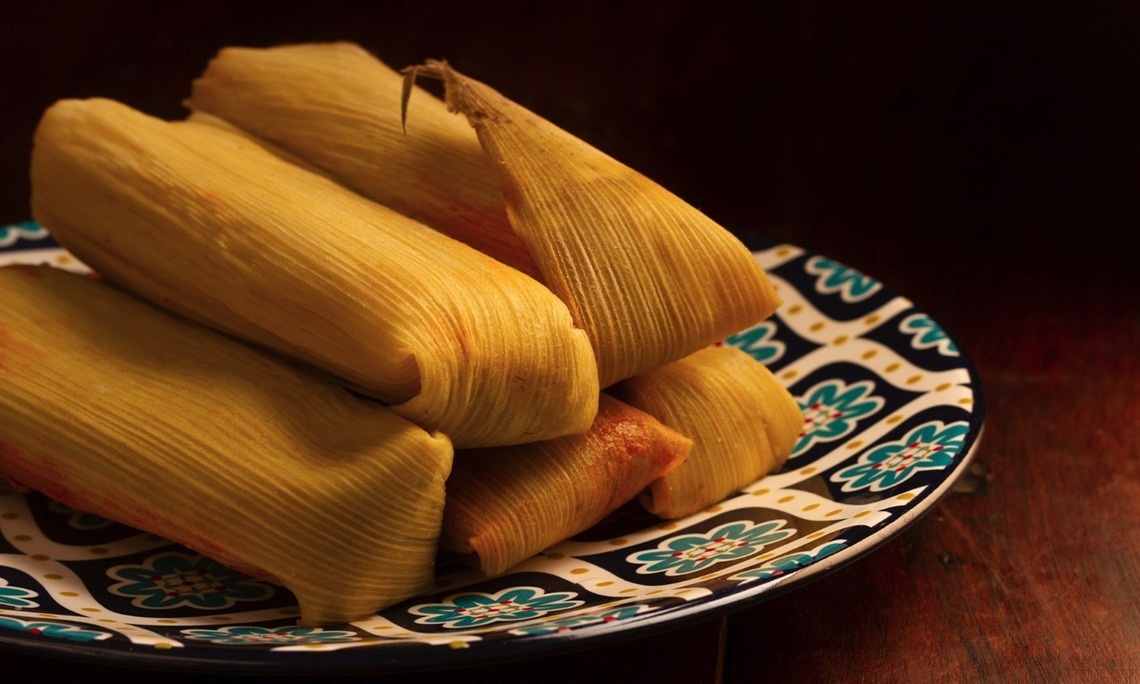Tamales and a not only Mexican celebration
Gastronomy 24/01/2024
After the Christmas holidays, a tradition is carried out in Mexico that combines colorful elements with flavor, fused into gastronomic expressions. The tamales and a party in his honor occur on February 2nd of each year.
The tradition, which began as a religious festival, today is a reason for communities from all over the country to gather and enjoy a dinner in which they can taste this typical dish. On this occasion we will tell you a little more about this date, which has as its precursor the Rosca de Reyes (Three King’s bread), which is eaten on January 5th and 6th.
On February 2nd, in different traditional locations in Mexico, the "uprising of the child" is carried out, which consists of bringing images of the Child Jesus to Catholic temples. Over the years, this religious tradition was woven into another ritual, one that occurs the month before: eating Rosca de Reyes.
Between January 5th and 6th of each year, Mexican families gather to eat this traditional bread that, inside, has hidden figurines that symbolize that Child God. Whoever, when breaking bread, finds “the child” will be obliged to invite everyone who participated in that event to eat tamales and atole on February 2nd.
The name “tamalli” or tamal comes from the Nahuatl language, which means “wrapped with care”. It’s a food based on corn, combined with meat and sauce or with fruits, which is cooked in a leaf of the same plant or the banana tree.
From the first years of the Spanish conquest in Mexico, Fray Bernardino de Sahagún related that this dish was part of the gastronomy of Mesoamerican cultures. In the document “General History of Things in New Spain” he narrated that tamales were eaten, mainly during Mexican festivities.
Currently, we can find an enormous diversity of these foods: rajas with cheese, pumpkin, broad beans, potatoes or beans. But there are also combinations such as chicken with mole, sauce with chicken or strawberry with raisins, commonly known from the color that characterizes them (green, red or pink).
In the Park Royal Hotels & Resorts restaurants you can find some presentations of tamales. Inside the Veranda restaurant, in Park Royal Beach Huatulco, you will find traditional mole tamales, which combine this delicious food with chicken.
Catholic devotions had an important weight in the founding of Latin American cities. The images of saints and virgins gave names to localities that, today, preserve their tradition in some way.
This is the case of Buenos Aires, which has as its image and spiritual benefactor the Virgin of Candelaria, called Our Lady of Buen Aire (Good Wind). In her honor, the city celebrates cultural and gastronomic festivities.
Although the main festival is celebrated on April 24th, as it’s a representation of that deity, celebrations are also held on February 2nd. 15 minutes from the Basilica of Buenos Aires is Park Royal City Buenos Aires, from where you can go out to visit the capital of Argentina and delight in its magic.
The combinations and mixtures of cultures, known as syncretism, have given us, over the centuries, an endless number of festivities and traditions that we can enjoy today. This time, we hope that we’ve awakened your desire to learn more about these customs and that you allow yourself to enjoy them with the help of Park Royal Hotels & Resorts.
The tradition, which began as a religious festival, today is a reason for communities from all over the country to gather and enjoy a dinner in which they can taste this typical dish. On this occasion we will tell you a little more about this date, which has as its precursor the Rosca de Reyes (Three King’s bread), which is eaten on January 5th and 6th.
“The Child” and the Rosca de Reyes
On February 2nd, in different traditional locations in Mexico, the "uprising of the child" is carried out, which consists of bringing images of the Child Jesus to Catholic temples. Over the years, this religious tradition was woven into another ritual, one that occurs the month before: eating Rosca de Reyes.
Between January 5th and 6th of each year, Mexican families gather to eat this traditional bread that, inside, has hidden figurines that symbolize that Child God. Whoever, when breaking bread, finds “the child” will be obliged to invite everyone who participated in that event to eat tamales and atole on February 2nd.
Tamales: an ancient indigenous tradition
The name “tamalli” or tamal comes from the Nahuatl language, which means “wrapped with care”. It’s a food based on corn, combined with meat and sauce or with fruits, which is cooked in a leaf of the same plant or the banana tree.
From the first years of the Spanish conquest in Mexico, Fray Bernardino de Sahagún related that this dish was part of the gastronomy of Mesoamerican cultures. In the document “General History of Things in New Spain” he narrated that tamales were eaten, mainly during Mexican festivities.
Currently, we can find an enormous diversity of these foods: rajas with cheese, pumpkin, broad beans, potatoes or beans. But there are also combinations such as chicken with mole, sauce with chicken or strawberry with raisins, commonly known from the color that characterizes them (green, red or pink).
In the Park Royal Hotels & Resorts restaurants you can find some presentations of tamales. Inside the Veranda restaurant, in Park Royal Beach Huatulco, you will find traditional mole tamales, which combine this delicious food with chicken.
La Candelaria in Argentina?
Catholic devotions had an important weight in the founding of Latin American cities. The images of saints and virgins gave names to localities that, today, preserve their tradition in some way.
This is the case of Buenos Aires, which has as its image and spiritual benefactor the Virgin of Candelaria, called Our Lady of Buen Aire (Good Wind). In her honor, the city celebrates cultural and gastronomic festivities.
Although the main festival is celebrated on April 24th, as it’s a representation of that deity, celebrations are also held on February 2nd. 15 minutes from the Basilica of Buenos Aires is Park Royal City Buenos Aires, from where you can go out to visit the capital of Argentina and delight in its magic.
The combinations and mixtures of cultures, known as syncretism, have given us, over the centuries, an endless number of festivities and traditions that we can enjoy today. This time, we hope that we’ve awakened your desire to learn more about these customs and that you allow yourself to enjoy them with the help of Park Royal Hotels & Resorts.















